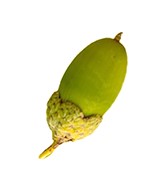How do the VAT rules apply to continuous supplies of goods and services?
This is a freeview 'At a glance' guide to VAT and continuous supplies of goods and services.
At a glance
If services are supplied to a customer on a continuous basis and payments are received at regular intervals or by instalments (such as standing orders or direct debits) a VAT tax point is created on the earliest occurrence of the following:
- Issue of a VAT invoice.
- Receipt of payment.
A 'request for payment' is not a tax invoice: it does not create a tax point and so no VAT is due until payment. This can assist cash flow.
When payments are due to be made at regular intervals you can issue a VAT invoice at the start of any period of up to one year (provided that more than one payment is due in the period) to cover all the payments due in that period.
For each payment you should set out the:
- VAT-exclusive amount.
- Date on which the payment is due.
- Rate of VAT.
- VAT payable.
If you decide to do this, you do not have to account for output VAT on any payment until the earlier of:
- The date on which it is due.
- The date you receive it.
Your customer must not reclaim as input tax, any VAT shown on the VAT invoice until the earlier of:
- The date on which the payment is due.
- The date you receive payment.
The same rules apply to continuous supplies of goods, in the form of water, gas and electricity.
If there is a VAT rate change during the period covered by an invoice for continuous supplies, you can declare VAT at the new rate on the part of the supply of goods or services you made after the rate change, even though the normal tax point happened earlier.
- If this reduces the overall amount of VAT due then you must issue a credit note to your customer.
Useful guides on this topic
Time of supply (Tax Point)
The time of supply of goods or services determines the date on which VAT becomes due. There are a number of different rules which must be considered.
Input VAT: What constitutes a valid claim (& VAT invoice)?
What is Input VAT? Who can claim it? What is needed for a valid claim? What needs to be included on a VAT invoice and can you make a claim without one?
Place of supply: Services
The place of supply (POS) of a service determines whether the supply is within the scope of UK VAT and whether VAT is payable on that supply.
Place of supply: Goods
The place of supply (POS) of goods determines whether the supply is within the scope of UK VAT and whether VAT is payable on that supply.
External link
HMRC: Guidance VAT: instalments, deposits, credit sales

If you like our content come and join us.
Thousands of accountants and advisers and their clients use www.rossmartin.co.uk as their primary TAX resource.
Register with us now to receive our receive our FREE SME Topical Tax Update & newletter

